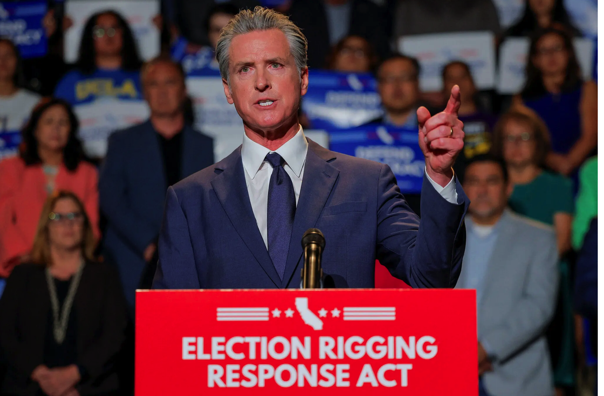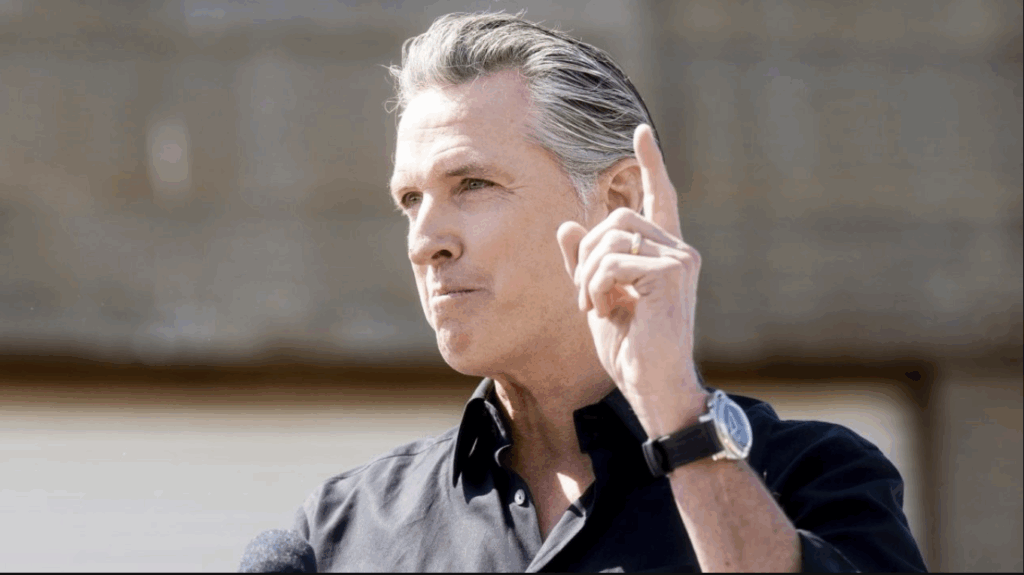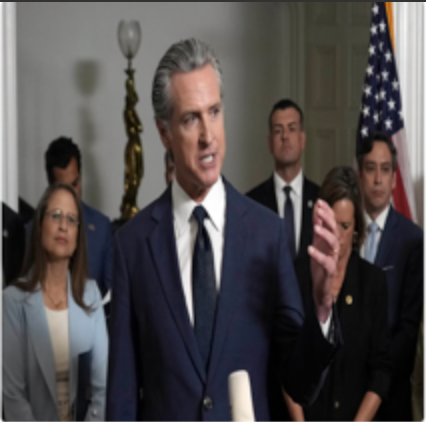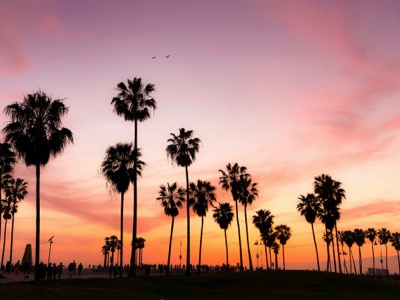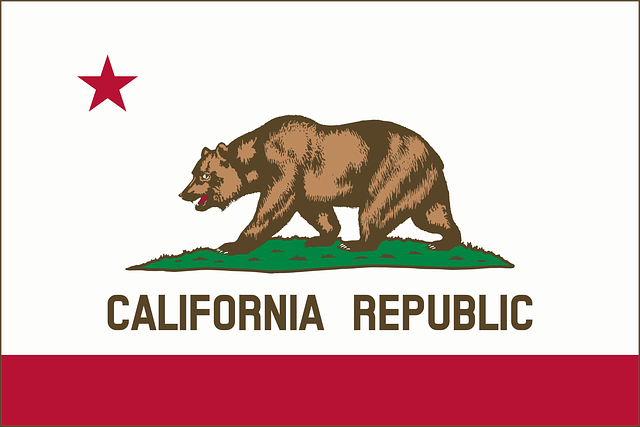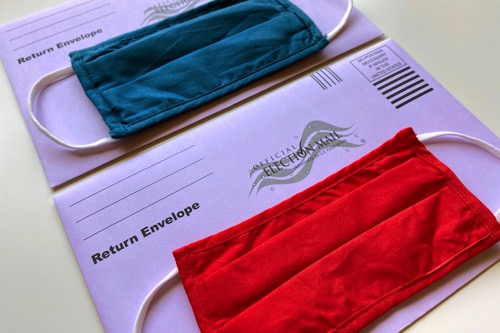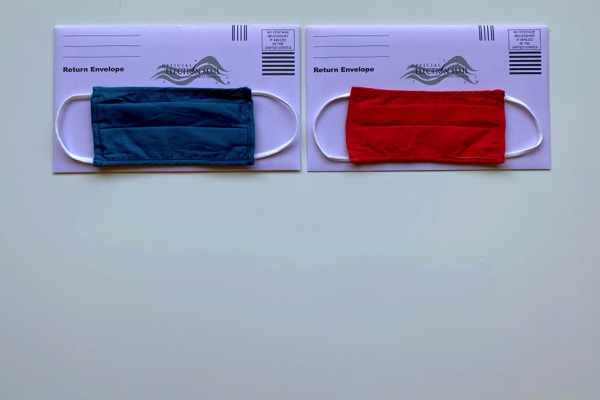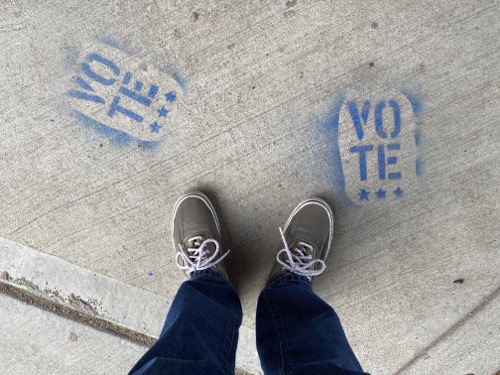California was not the only state that held Senate Elections during the 2022 election. California decided to hold two Senate elections concurrently on November 8, 2022. One was for a special election, and the other was for a general election full term.
Wikipedia provided information about the 2022 United States Senate elections in California:
Two 2022 United States Senate elections in California were held concurrently on November 8, 2022, to elect a member of the United States Senate to represent the State of California. There were two ballot items for the same Class 3 seat: a special election to fill the seat for the final weeks of the 117th United States Congress (ending on January 3, 2023), and a general election for a full term (beginning on the same day), starting in the 118th United States Congress.
Incumbent Democratic Senator Alex Padilla was appointed in 2021 by Governor Gavin Newsom to fill the vacancy created by Kamala Harris’s election to the vice presidency in 2020, and he sought a full term.
A jungle primary: is a primary election in which all candidates for the same elected office run against each other at once, regardless of political party. In most cases, two winners advance to the general election, in which case it is called a top-two primary. If more than two candidates are selected for the general election, it may be known as a top-four primary or top-five primary. It is also known as a jungle primary. It took place on June 7, 2022.
The top two candidates in each primary, regardless of party, advanced to the special and regular general elections in November. With his advancement out of the primary, Mark. P. Meuser became the first Republican since 2012 to advance to the general election, as both the 2016 and 2018 Senate elections solely featured Democrats at the top two candidates.
This race was a rematch between the two, as both had previously run for the Secretary of State in 2018. Padilla ultimately won both elections. Padilla became the first Latino elected to the U.S. Senate from California, and the first male elected to the Senate from California since Pete Wilson was re-elected in 1988.
Ballotpedia provided information about the United States Senate election in California, 2022:
Voters in California elected one member to the U.S. Senate in the general election on November 8, 2022. The primary was scheduled for June 7, 2022. The filing deadline was March 11, 2022.
The election filled the Class III Senate seat held by Alex Padilla (D), who first took office in 2021 after Kamala Harris (D) was elected vice president.
There was also a special election to fill the remainder of the term Harris won in 2016, ending in January 2023. According to Ballotpedia, the special election became necessary after Kamala Harris (D) was elected Vice President of the United States.
The outcome of this race affected the partisan balance of the U.S. Senate in 2022. Democrats retained their majority and gained one net seat, with the Senate’s post-election partisan balance at 51 Democrats and 49 Republicans.
Thirty-five of 100 seats were up for election, including one special election. At the time of the election, Democrats had an effective majority, with the chamber split 50-50 and Vice President Kamala Harris (D) having the tie-breaking vote. Of the seats up for election in 2022, Democrats held 14 and Republicans held 21.
Ballotpedia provided information about California’s Nonpartisan primary for U.S. Senate in 2022:
Ballotpedia provided information about Alex Padilla:
Alex Padilla (Democratic Party) is a member of the U.S. Senate from California. He assumed office on January 20, 2021. His current erm ends on January 3, 2029.
Alex Padilla (Democratic Party) ran for re-election to the U.S. Senate to represent California. He won in the general election on November 8, 2022.
Alex Padilla also ran in a special election to the U.S. Senate to represent California. He won in the special election on November 8, 2022.
On December 22, 2020, California Gov. Gavin Newsom (D) appointed Padilla to fill the U.S. Senate vacancy created by Sen. Kamala Harris becoming vice president of the United States. He was sworn in on January 20, 2021. Padilla will serve the remaining two years of Harris’s term.
Padilla previously served as the California Secretary of State. He was first elected 2024 and was re-elected in 2018. He left office on January 18, 2021, in order to be sworn in as a member of the United States Senate.
Padilla is a former Democratic member of the California State Senate, representing District 20 from 2006-2014. He was ineligible to run for re-election in 2014.
Prior to serving in the California Senate, Padilla was on the Los Angeles City Council from 1999-2006, serving as its president from 2001-2006.
Alex Padilla earned a B.S. in mechanical engineering from the Massachusetts Institute of Technology in 1994 and graduated from the Coro Fellowship Program in Leadership and Public Affairs in 1995. Padilla’s career experience includes working as a staffer, political director, or campaign manager for several Democratic politicians in California, including Dianne Feinstein, Richard Alarcon, Gilbert Cedillo, and Tony Cardenas. He serve as the president of the League of California Cities and as a member of the National Association of Latino Elected and Appointed Officials.
Ballotpedia provided information about Mark P. Meuser:
Mark Meuser (Republican Party) ran for election to the U.S. Senate to represent California. He lost in the general election on November 8, 2022.
Mark Meuser also ran in a special election to the U.S. Senate to represent California. He lost in the special election on November 8, 2022.
Mark Meuser was a 2012 Republican candidate for District 7 of the California State Senate.
Ballotpedia provided information about Cordie Williams:
Cordie Williams (Republican Party) ran for election to the U.S. Senate to represent California. He lost in the primary on June 2022.
Cordie Williams served in the U.S. Marine Corps from 1998 to 2022.
Cordie Williams completed Ballotpedia’s Candidate Connection survey in 2022. Here are some of the questions they answered:
Who are you? Tell us about yourself.
Dr. Cordie Williams is a husband, father, Marine Veteran, and doctor. When the government began its response to COVID in early 2020, Dr. Cordie felt the rights of Americans were being violated. He knew he had to be the man to stand up. Dr. Cordie picked up a megaphone and began speaking up in defense of liberty and protests all across California.
Dr. Cordie Williams is a strong advocate for personal freedoms which are enshrined in our Constitution. In the United States Senate, he will uphold the foundational belief that the citizens of California, and all Americans, are at their best when they decide what it is in their own best interest. Faith, family, and freedom are at the very core of who Dr. Cordie is. He is unashamed to put his values, shared among most Californians, on full display.
After serving in the United States Marine Corps, the American dream of entrepreneurialism came to fruition for Dr. Cordie as he and his wife Dr. Tania Williams started, and continue to operate today, a successful chiropractic practice in Southern California. Dr. Cordie has put all the he has worked for on the line to ensure that all Californians remain free from government control over their daily lives.
Please list below 3 messages of your campaign. What are the main points you want voters to remember about your goals for your time in office?
- Parental Rights
- Personal Freedom
- Election Integrity
What areas of public policy are you personally passionate about?
Through his unshaken faith, raising a family, service to Country, and business experience, Dr. Cordie Williams has witnessed the greatness of this Country. He believes that through limited government, personal responsibility, and individual liberty, we can and will restore the American spirit. In 1998, Dr. Cordie took an oath to protect and defend the Constitution from all enemies foreign and domestic. He is running for the U.S. Senate to continue upholding this oath.
Ballotpedia provided information about Jonathan Elist:
Jonathan Elist (Republican Party) ran for election to the U.S. Senate to represent California. He lost in the primary on June 7, 2022.
Jonathan Elist also ran in a special election to the U.S. Senate to represent California. He lost in the special primary on June 7, 2022.
Jonathan Elist was born in Los Angeles. California. He earned a bachelor’s degree from Princeton in 2007, a graduate degree from Stanford in 2012, and a graduate degree from Harvard in 2013. His career experience includes working as a CEO of a medical device company. Elist has served on the board of directors for the Jewish Federation of Los Angeles.
Elist completed Ballotpedia’s Candidate Connection survey in 2022. Here are some of the questions he answered:
Who are you? Tell us about yourself.
I am an experienced government advisor, successful businessman, and upset parent who is determined to bring a fresh perspective to DC. As the son of Iranian immigrants, I was determined to make the most of the American Dream, earning international affairs and business degrees from Princeton, Stanford, and Harvard.
I’ve had a diverse blend of professional experience in both the public and private sectors: the Small Business Administration, the US Department of Commerce, and in government consulting with international, federal, state, and local government entities. I launched a successful urology medical device company. Alongside my professional experience, I have volunteered my time with major philanthropic organizations with a leadership role.
As a dedicated father and husband, I am concerned about my family’s future. This was the driving force behind my candidacy; America gave the opportunity to my parents and me, and now it is time that I continue to fight for our future generations. Politicians like Alex Padilla, George Gascon, and Gavin Newsom do not represent us. It is time we bring common sense leaders back to our nation.
Please list below 3 key messages of your campaign. What are the main points you want voters to remember about your goals for your time in office?
- Vibrant Economy -What do out-of-control inflation, record gas prices, and a housing crisis have in common? They are caused by tone-deaf politicians who refuse to pass sensible legislation to provide relief to Americans. With 64% of Americans living paycheck to paycheck, it is critical that we address the silent tax of inflation.
- Safe Communities – Violent crime is skyrocketing, and our communities feel less safe by the day. Our “leaders” have failed us because they refuse to prosecute crime. I would help direct resources to hire more police officers, provide them with dignified compensation, and bolster efforts to prosecute criminals.
- World-Class Education – The educational system is failing our children. As a father, I’ve watched California consistently rank at the bottom of education, even with all of the resources we have expended. We need to strengthen our educational institutions by pushing for accountability and transparency while incentivizing competition in the market. Most importantly, we need to ensure that parents have a seat at the table when it comes to major curriculum decisions for their children.
What areas of public policy are you personally passionate about?
I believe I have the necessary experience and passion in the policy areas of health, economics, and foreign affairs. I have served as a government efficiency consultant with major public sector entities, and as a successful medical device CEO, I understand the necessity of market-driven solutions to help make government more efficient. Finally, as the son of Iranian immigrants, former employee of the U.S. Embassy in Argentina, and a strong supporter of Israel, I acknowledge the importance of our interconnected world and the need for strong leadership.
Ballotpedia provided information about Chuck Smith:
Chuck Smith (Republican Party) ran for election to the U.S. Senate to represent California. He lost in the primary won June 7, 2022.
Chuck Smith was born in Sacramento, California. He served in the U.S. Marine Corps from 1968-1973. He earned an associate degree from American River College in 1974. His career experience includes working in law enforcement.
Chuck Smith completed Ballotpedia’s Candidate Connection survey in 2022. Here are some of the questions he answered:
Who are you? Tell us about yourself.
I am a Conservative, Christian, Republican. I am married to my wife, Linda, for the past 30 years. We have 3 grown children and 3 grandchildren. I served in the US Marie Corps for 5 years and am a combat Vietnam Veteran. I am a retired Sacramento Police Officer. Combined with my time as Yolo County Deputy Sheriff, I spent 13 years as a graveyard street cop on patrol until I retired in 1990 due to an on the job injury. I also worked at the Sacramento Federal Courthouse for 25 years as a Court Security Officer. Currently I have been retired for the past 5 years. I have volunteered for the Trauma Intervention Program in Sutter County and volunteered for 2 years on the Sutter County Grand Jury. As you can see by my background, I am not a politician. However, I am a Patriot, Warrior and a Fighter and I promise that I will do my best and fight for the people of California and this Greatest Nation on Earth. God Bless America.
Please list below 3 key messages of your campaign. What are the main points you want voters to remember about your goals for your time in office?
- I stand for: Our Constitution, strong Law Enforcement and Military, Robust Economy, Secure Borders, 2nd Amendment, Smaller Government, Term Limits, Less Taxes.
- I am not a politician so I don’t have any allegiance to Big Money, Big Pharma, or Lobbyists. My only allegiance is to our Constitution and the people of America.
- The American Dream is being destroyed by Corrupt politicians and their personal Agendas. I believe in America First Policies and that the American Citizens are our first priority.
What areas of public policy are you personally passionate about?
If we continue on this Administrations Economical Policies, America and its Citizens will become bankrupt. America will become a Socialist Nation and a Third World Country.
If our crime way is not stopped, there will be anarchy throughout our Nation.
Our Nation is being overrun by illegal Immigrants from around the globe. Many are bringing diseases into the country. Many are Cartel members and they are bringing in illegal and deadly drugs, sex and human trafficking rings and are attempting to take over and control our city’s [sic] with their criminal activities.
All of these issues, and more, have to be addressed and fixed or changed before its too late.
Ballotpedia provided information about James P. Bradley:
James P. Bradley (Republican Party) is running for election to the U.S. Senate to represent California. He declared candidacy for the primary scheduled on March 5, 2024.
James P. Bradley received his MBA in financial management and international business from National University. His professional experience includes serving as a chief financial officer and chief operating officer, beginning in 2015. Bradley also served in the United States Coast Guard from 1981-1986.
Ballotpedia provided information about Douglas Howard Pierce:
Douglas Howard Pierce (Democratic Party) is running for election to the U.S. Senate to represent California. He declared candidacy for the primary scheduled on March 5, 2024.
Ballotpedia provided information about John Thompson Parker:
John Thomas Parker (Peace and Freedom Party) ran in a special election to the U.S. Senate to represent California. He lost as a write-in in the special primary on June 7, 2022.
John Thomas Parker also ran for election to the U.S. Senate to represent California. He lost in the primary on June 7, 2022.
John Thomas Parker was born in Jersey City, New Jersey. His career experience includes working as a coordinator for the Harriet Tubman Center for Social Justice.
John Thomas Parker completed Ballotpedia’s Candidate Connection survey in 2022. Here are some of the questions he answered:
Who are you? Tell us about yourself.
John Parker is the coordinator of the Harriet Tubman Center for Social Justice and leading board member of the Socialist Unity Party. He accompanies former U.S. Attorney General Ramsey Clark on many anti-war delegations abroad. Parker was only 18 when he organized his first union election – at a small steel plant in New Jersey. An African American, he has worked at a variety of other jobs, including teaching at a public school in Newark.
After moving to Los Angeles with his family in 1998, he became a leader in the anti-war movement. Parker sparked the minimum wage increase proposals in Los Angeles by being the first to author and initiate the Los Angeles $15 minimum wage ballot initiative in 2013 that would have taken effect immediately upon voter approval.
Parker recently attended the inauguration of socialist President Xiomara Castro at the invitation of the Libre Party, due to his solidarity work with Honduras after the 2009 U.S. supported coup.
Legislative/Legal Struggles:
- Initiator and author of $15 Minimum Wage Ballot Initiative of 2014
- Leading current lawsuit against Kroger’s for closing Ralphs grocery store in South Central Los Angeles, on behalf of plaintiff: Southern Christian Leadership Conference of Los Angeles
Please list below 3 key messages of your campaign. What are the main points you want voters to remember about your goals for your time in office?
- Call for an immediate cessation of U.S. wars and proxy wars and the funding of wars and occupations; divert the funding to vital social programs and for use in programs to reverse environmental damage, prioritizing global warming.
- Immediately call for a state of emergency in Black and Brown neighborhoods to address police murder with the initial step of ceasing the use of deadly force by police in communities where a majority of residents are Black or Latinx.
- Institute a referendum calling for the conversation of privately owned vital industry into public ownership.
What areas of public policy are you personally passionate about?
It has become crystal clear during this pandemic and the current push by the U.S. -led NATO for World War III, that the institutions in this country, and those who support them and enable them, can no longer be trusted to provide even the most basic protections of life, and increasingly threaten the existence of others beyond its borders. It is therefore time to take a sober look at our world and the rapidly deteriorating effects this systemic incompetence is having on our communities, our workplaces, and our families.
The two-party system in the U.S. of Democrats and Republicans are two sides of the same coin, funded by and serving the same corporate masters. Their politicians, in general, will continue to make decisions of war, climate change, growing economic impoverishment and racist and sexist state repression based on the sole motivation of maximizing profits for their masters – who have ultimate control over the use of those profits. It’s our work, day in and day out that make those profits possible, yet this system does not allow us any real say in the consistent decision to spend trillions on war and relative pennies on social necessities. This will only change when corporate and financial monopoly ownership of the industries of production and finance are transferred to the majority – to those who it oppresses and exploits. This campaign is about building a movement to make that systemic change possible.
May 20: The Sacramento Bee posted an article titled: “A socialist, a billionaire, a podiatrist: Alex Padilla’s Senate Challengers in California” From the article:
…Twenty-three candidates are on the California secretary of state’s certified list to run for a full, six-year term. Of those, eight are also running to fill the remainder of his current term and thus will appear on the ballot twice.
Sen. Alex Padilla, the Democratic incumbent, is running both to finish this term and serve the next one. He is strongly favored to win both.
California’s first Latino U.S. senator, Padilla, was appointed by Gov. Gavin Newsom to fill the remainder of Vice President Kamala Harris’ unexpired term. He previously served as California’s Secretary of State.
Under California law, the governor must call for an election during the regularly-scheduled primary and general election to fill a vacated Senate seat. The governor appoints someone to serve in the interim.
Since joining the Senate in January 2021, Padilla, 49, has worked on COVID-19, wildfire, water and housing relief. He has also spearheaded bills on immigration reform called to end the filibuster rule and pushed for voting rights legislation.
“I’m seeking a full term as Senator to continue delivering for Californians and to continue fighting for the critical issues at stake for our country – the fundamental right to choose, the right to vote, immigration reform and the protection of our democracy,” he said in a statement sent to The Bee…
...DEMOCRATS
Among Padilla’s Democratic challengers is Dan O’Dowd, a billionaire tech entrepreneur who is running for both the remainder of this term and the next one. His mission is to “make computers safe for humanity,” including by bolstering cybersecurity and taking Tesla’s full self-driving car technology off the market until it is safer.
“We need to stop putting lives at risk with bad software, poorly designed software that’s going to fail,” he told The Bee.
Timothy J. Ursich Jr. a chiropractor and sports medicine specialist, will also be on the ballot for both terms.
Three Democrats are seeking only the full term: Akinyemi Agbede, a mathematician; Douglas Howard Pierce, a missing children’s advocate, and Obaidul Huq Pirjada, an attorney.
Pirjada told The Bee his priorities would be tamping down on inflation, enhancing the child tax credit and aiding seniors and veterans, among other groups. He said that, although his campaign might not gain the backing of top-dollar donors, his background helps him connect on a personal level with immigrants, communities of color and families.
“I speak for the community of the common people,” he said.
REPUBLICANS
Four Republicans are contending for both the remainder of this term and the next one.
Jon Elist is founder and chief executive officer of a medical device company. He has the most campaign cash on hand of any of Padilla’s challengers.
Elist is focused on the economy, immigration reform, crime and parental choice in their children’s education. Most of his solutions involve bipartisan compromise, such as better pathways to citizenship for those seeking it.
“I’m a very independent-minded candidate. I certainly lean conservative, but at the end of the day, I’m a pragmatist,” he told The Bee. “Even on a personal level, having a personal relationship with people across the aisle.”
James P. Bradley once worked in search and rescue for the Coast Guard and the health care business. In a poll of voters by iSideWith, a non-partisan political discussion and polling platform, Bradley ranks second to Padilla with 14% of the vote. Padilla sits at 50%.
Bradley told The Bee that tax holidays to help small business owners and entrepreneurs were among his priorities for the economy, housing and education.
“The big one is the future of our children. There are many bills being passed into law eroding parental rights and their ability to do proper parenting,” Bradley said.
Mark P. Meuser is an attorney who focuses on election and constitutional law. He advocated against prolonged remote learning during the COVID-19 pandemic and was an attorney in a lawsuit against California leaders over the policy.
Dr. Myron L. Hall is a podiatrist and former naval officer who opposes pandemic mandates, is pro-life and backs the Second Amendment. In response to a query for an interview, a representative for Hall simply responded, “The goal is to win.”
Six Republicans are running just for the full term.
Pastor Sarah Sun Lew, a businesswoman and non-profit director, is running to support small business owners, students, those with temporary worker visas and health care leaders.
“We have to make them street smart,” she said of students. “There are not enough internships. They wouldn’t have all those college loans if we were to support those connections as entrepreneurs and students work together.”
Robert George Lucero Jr., a consultant, prioritizes preventing nuclear war, solving the homeless crisis and boosting jobs.
Enrique Petris is a businessman and former federal worker calling for tighter border security free community college for students and infrastructure jobs…
May 20: KCRA 3 posted an article titled: “It’s not a mistake. California voters will vote for the same U.S. Senate seat twice” From the article:
…June 7 is something of a checkpoint for most races, where the top two vote-getters regardless of political affiliation will advance to the November Election. If you’ve already received your ballot, you might have noticed that the office of U.S. Senate is on your ballot twice.
It’s not a mistake; its not a typo.
It’s something more of an anomaly stemming from when then-Sen. Kamala Harris became vice president of the United States. That created a vacancy that Gov. Gavin Newsom filled with the appointment of then-California Secretary of State Alex Padilla. But that appointment is only temporary because of a California law signed shortly after Padilla’s appointment that gives votes the chance to decide whether an official appointed to a U.S. Senate seat should serve out the remainder of the term.
Newsom has faced criticism stating the U.S. Senate seat is an office chosen by the people, and that an appointee could not fill out the rest of the term without competing in an election.
So, this year, voters will cast their choice for U.S. Senate twice. The first race is a special one to fill the remainder of the term – it ends Jan. 3, 2023 – that Padilla is currently holding. The winner of that race advances to November. From there, the victor in November will fill out the rest of the term through Jan. 3…
May 25: CalMatters posted an article titled: “Two elections for the same seat” From the article:
When you get your November 2022 ballot, it might feel as though you’re seeing double: For the first time in history, a race for the same California seat in the U.S. Senate will likely appear twice.
That’s because lawmakers are rushing to tweak a piece of California’s election law that experts say could violate the U.S. Constitution. The problem became apparent when Kamala Harris resigned from the Senate to become the vice president, and Gov. Gavin Newsom appointed Alex Padilla to fill the seat through the end of Harris’ term in January 2023.
That apparently put the state in danger of contradicting the U.S. Constitution, which says governors’ temporary appointees can hold their positions only “until the people fill the vacancies by election.” And there’s an election in November 2022 – two months before Harris’ term ends.
To address the constitutional snag, the state Assembly on Monday passed a bill that calls for an election whenever a Senate seat becomes vacant. It also generally requires that election to be held the same day as a regularly scheduled statewide election, “to ensure the greatest participation” and “to avoid the costs and disruptions of standalone statewide special elections whenever possible,” according to the bill’s author, Menlo Park Democratic Assemblymember Marc Berman.
Therefore, if the state Senate also passes the bill, your November 2022 ballot will contain two elections for the same U.S. Senate seat: One of the remainder of Harris’s term running from November 2022 to January 2023, and one of the new six-year term beginning January 2023.
But Assemblymember Kevin Kiley, the Rocklin Republican who flagged the constitutional issue for the Legislature’s lawyers, told me [Emily Hoeven] the bill solves the problem in “the most undemocratic way possible” and argued Newsom should have called a separate election for Harris’ seat much earlier. The latter point was echoed by Christine Pelosi, chair of the California Democratic Party Women’s Caucus, in a November San Francisco Chronicle op-ed.
Ballotpedia provided information about the U.S. Special Election in California 2022:
On November 8, 2022, there was a special election to fill the rest of the six-year term that Kamala Harris (D) was elected to in 2016. A primary was scheduled for June 7, 2022. The filing deadline was March 11, 2022.
The special election became necessary because after Kamala Harris (D) was elected Vice President of the United States.
Ballotpedia provided information about the Special Nonpartisan Primary for U.S. Senate California:
- Alex Padilla (D): 55.0% – 3,740,582 votes
- Mark Meuser (R): 22.1% – 1,503,480 votes
- James P. Bradley (R): 6.9% – 472,052 votes
- Jonathan Elist (R): 5.9% – 403,722 votes
- Timothy Ursich Jr. (D): 3.3% – 226,447 votes
- Dan O’Dowd (D): 2.8% – 191,531 votes
- Myron Hall (R): 2.1% – 143,038 votes
- Daphne Bradford (Independent) 1.6% – 112,191 votes
- John Thompson Parker (Peace and Freedom Party) (Write-in): 0.1% – 9,951 votes
- Irene Ratliff (No Party Preference) (Write-in): 0.0% – 12 votes
Ballotpedia provided information about the Special General Election for U.S. Senate California:
- Alex Padilla (D): 60.9% – 6,559,308 votes
- Mark Meuser (R): 39.1% – 4,212,450 votes
Ballotpedia provide the results of the Nonpartisan primary for U.S. Senate California:
- Alex Padilla (D): 54.1% – 3,725,544 votes
- Mark Meuser (R): 14.9% – 1,028,374 votes
- Cordie Williams (R): 6.9% – 474,321 votes
- Jonathan Elist (R): 4.2% – 289,716 votes
- Chuck Smith (R): 3.9% – 266,766 votes
- James P. Bradley (R): 3.4% – 235,788 votes
- Douglas Howard Pierce (D): 1.7% – 116,771 votes
- John Thompson Parker (Peace and Freedom Party): 1.5% – 105,477 votes
- Sara Sun Liew (R): 1.1% – 76,994 votes
- Dan O’ Dowd (D): 1.1% – 74,916 votes
- Akinyemi Agbede (D): 1.0% – 70,971 votes
- Myron Hall (R): 0.8% – 58,349 votes
- Timothy Ursich Jr. (D): 0.8 votes – 58,358 votes
- Robert Lucero (R): 0.8 votes – 53,398 votes
- James Henry Conn (Green Party): 0.5% – 35,983 votes
- Eleanor Garcia (Independent): 0.5% – 34,625 votes
- Carlos Guillermo Tapia (R): 0.5% – 33,870 votes
- Pamela Elizondo (Green Party): 0.5% – 31,981 votes
- Enrique Petris (R): 0.5% – 31,883 votes
- Obaidul Huq Pirijada (D): 0.4% – 27,889 votes
- Daphne Bradford (Independent): 0.4% – 26,900 votes
- Don Grundmann (Independent): 0.1% -10,181 votes
- Deon Jenkins (Independent): 0.1% – 6,936 votes
- Mark Ruzon (No Party Preference) (Write-In): 0.0% – 206 votes
- Lilly Zhou (R) (Write-In): 0.0% – 58 votes
- Irene Ratcliff (No Party Preference) (Write-In): 0.0% – 7 votes
- Marc Roth (No Party Preference) (Write-In): 0.0% – 1 vote
June 7: CBS News reported brief a description of the California Senate Midterm elections for District 20:
- Alex Padilla (Democrat) advances to November general elections for U.S. Senate in California for both the short-term and full-term elections. A short term election will fulfill the term initially intended for current Vice President Kamala Harris, while the long would put Padilla in place for a six-year term at the end of the short-term.
Alex Padilla (Democrat) got a total of 391,297 votes (53%). Mark P. Meuser (Republican) got a total of 120,008 votes (16%). Cordie Williams (Republican) got 42,584 votes (6%).
The San Diego Union-Tribune wrote the following about Senator Alex Padilla:
…The future of Alex Padilla – the son of Mexican immigrants and an MIT engineering graduate – has been a source of speculation since 1999, when the political wunderkind joined the Los Angeles City Council at age 26 and the became that council’s youngest president two years later. High expectations were met on a career arc that took him from state Senate in 2006 to his 2014 election as California Secretary of State to his 2021 appointment by Gov. Gavin Newsom to fill the U.S. Senate seat Kamala Harris vacated when she became vice president. Padilla became the first Latino senator in California, where four out of 10 residents are Latino.
It was no surprise that Padilla fit in quickly in Congress with an unusually productive first 100 days as senator. He emerged as a studious, effective lawmaker who pushes his longtime causes of STEM education, voting access, immigration reform and reducing gun violence. And as he said in a May zoom interview with The San Diego Tribune Editorial Board, he’s felt particularly compelled as a former elections official to take on those who spread the “Big Lie” that Biden stole the 2020 election from Trump. He’s also become an even more forceful advocate of reproductive rights in the wake of the Supreme Court’s overturning of Roe v. Wade.
Given this history, Padilla was already likely to be elected this Nov. 8 both to fill out the final two months of Harris’s term – in a quirky election required by state law – and to a full, six-year term of his own. His victory was made all the more certain by the fact that in both races, his opponent is Mark Meuser, a Bay Area lawyer and Donald Trump admirer making his latest bid for elected office. In his Q&A with The San Diego Union-Tribune Editorial Board, Meuser took radical stands on issues like the Jan. 6, 2021, insurrection and the climate emergency and – like far to many others seeking office – showed zero familiarity with what life is like at the San Diego-Tijuana border. The contrasts with Padilla are striking.
Now, just 49, Padilla may be a senator for decades. We were eager to discuss many issues with him, only starting with the twin threats of Trump’s continuing 2020 election lies and potential 2024 candidacy – and the failure of Padilla and others in Congress to do more about cross-border sewage spills and long border wait times. Unfortunately, Padilla’s aides declined the request last month, saying he was “unavailable due to scheduling constraints” and then didn’t respond to a follow-up email expressing surprise and disappointment that someone who has so often stressed the importance of well-informed voters couldn’t find one hour in three months to discuss his priorities over Zoom. The choice in the race is clear, but so is the fact that Padilla shouldn’t avoid questions with so much at stake in the San Diego-Tijuana region and for democracy.
The Union-Tribune Editorial Board endorses Alex Padilla for Senate and hopes to connect soon.
Cal Matters provided a Professional Profile of Mark Meuser:
Mark Meuser is a career lawyer whose work has never strayed far from conservative politics. Born in Huntington Beach, Meuser got a law degree at Oak Brook Christian, a correspondence college. After a brief detour working for a Republican state senator in Missouri, he set up his own private practice in the East Bay before landing a job at a law office perhaps best known for waging legal war against California’s liberal laws.
This isn’t the first time Meuser has run for office. It’s not even the first time he’s run against Alex Padilla. In races for state senator to Secretary of State, the Republican hasn’t been deterred by the long odds of pitching his red policies to mostly blue voters. Now, he’s seeking his highest office yet. Could this time be different? The June 7 primary results aren’t encouraging. On both U.S.Senate elections on the ballot (yes, there are two), he trailed Padilla by more than 30 percentage points…
Experience:
Lawyer: 2005 – present
Took a job at Dhillon Law Group, the law office of California Republican National committee woman Harriet Dhillon, where he worked on cases challenging the states COVID public health restrictions in churches, Gov. Newsom’s executive order to mail every voter a ballot, and the state’s voter registration system, which he argued, without evidence, enables non-citizens to illegally vote.
Out if his private practice in Walnut Creek, Meuser won an airline passenger the right to sue United Airlines for violating the Americans with Disabilities Act and defended a far-right blogger who was subpoenaed amid a legal battle between the National Abortion Foundation and anti-abortion activists.
...Candidate and political activist
In 2018, an election year that would retrospectively be dubbed the year of the GOP-crushing “blue wave,” Meuser ran to be California’s top election administrator on the specter of voter fraud. He lost to incumbent Alex Padilla by 29 percentage points.
In 2012, it was the Battle of the Marks: Meuser, then 38, ran in the state Senate district that included his hometown of Walnut Creek on a conservative platform against Democrat Mark DeSaulnier. Meurcer lost. When DeSaulnier hopped over to Congress two years later, Meuser announced that he would run to take his seat, but decided against it at the last minute.
Co-led the unsuccessful 2008 anti-abortion campaign to change the Colorado state constitution to define a fertilized human egg as a legal person.
June 8: Desert Sun posted an article titled: “California primary: Padilla to face GOP’s Mark Meuser in November election for U.S. Senate” From the article:
Heavy favorite and incumbent Democrat Alex Padilla and Republican attorney Mark Meuser have advanced to the November general election for U.S. Senate in California, Associated Press said Tuesday evening.
With 100% of the precincts reporting, Padilla and Meuser were outdistancing the 23-person field by enough votes to declare them the two winners who will now square off in November, not once, but twice.
Padilla has 53.5% of the vote, while Meuser was well behind him at 14.3% of the vote, but no one else in the field had more than 6.7% of the vote.
In Tuesday’s primary, Padilla’s seat was the subject of two different votes, which may have caused some confusion for voters…
…In 2021, U.S. Senator Kamala Harris became vice president. This gave Gov. Gavin Newsom the opportunity to appoint Padilla, who was then California’s Secretary of State. The 17th Amendment of the U.S. Constitution says Senate appointees should serve “until the people fill the vacancies by election as the legislature may direct.”
So, in Tuesday’s primary, one of the votes was for a special election for someone to fill the 56 or so days (from when election results are certified in November until Jan. 3, 2023) that will be left on Harris’ original term. Eight people were competing for that position. And the second vote was for the full six-year term beginning in January.
Padilla (51.3%) and Meuser (21.6%) advanced as the candidates in the short stint race as well.
Padilla, who has the backing of the Democratic establishment in the state, was the odds-on favorite. Meuser has been a critic of some of the state’s coronavirus health restrictions and has slammed Padilla for the state of the current economy in California.
Meuser, who is from Pasadena, issued a statement Tuesday night.
“I am beyond grateful for the support of the people of California for giving me the opportunity that a Republican hasn’t received in 10 years: to be on the ballot in the general election for one of California’s U.S. Senate seats,” said Meuser.
“The fact that this is happening is a telling sign of a shift in the minds of California voters and their excitement for this campaign. They are tired of the continued one-party rule that has dominated this state for over a decade and the continued representation in Washington from rubber stamp politicians from the same party. 2022 will be a red wave year and California is going to be a part of it.”…
Ballotpedia provided information about the General Election for U.S. Senate California:
- Alex Padilla (D): 61.1% – 6,621,621 votes
- Mark Meuser (R): 38.9% – 4,222,029 votes
Wikipedia provided information about Shirley Weber:
The Secretary of State of California is the chief clerk of the U.S. state of California, overseeing a department of 500 people. The Secretary of State is elected for four year terms, like the state’s other constitutional officers; the officeholder is restricted by term limits to two years.
The current Secretary of State is Shirley Weber, who assumed the role following the resignation of Alex Padilla, who as appointed to become the U.S. senator for California following Kamala Harris’ resignation to become the vice president of the United States.
